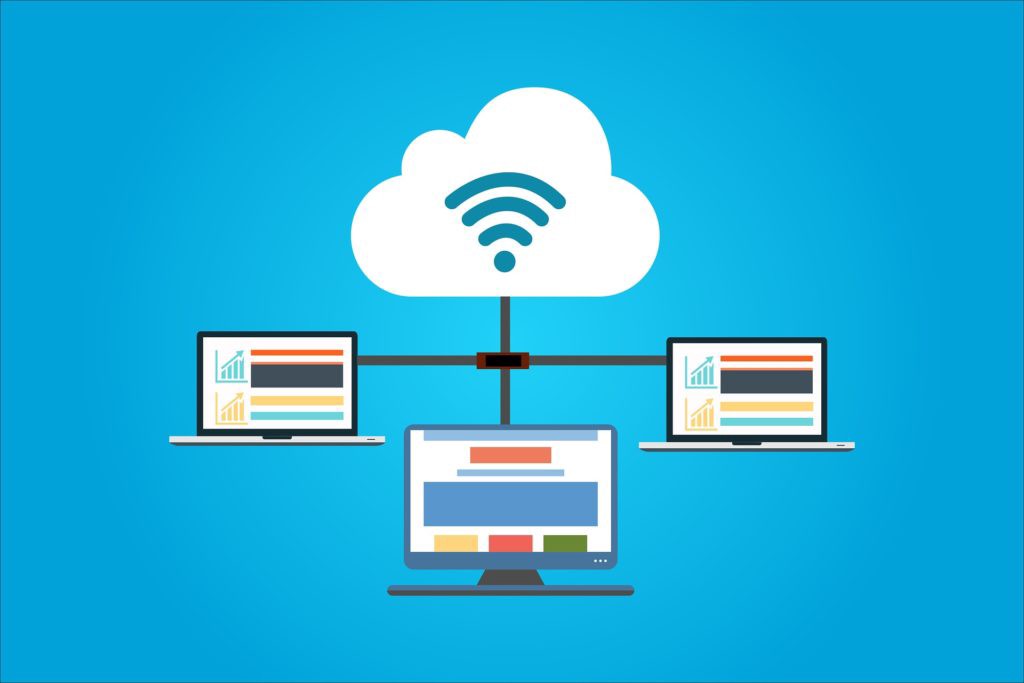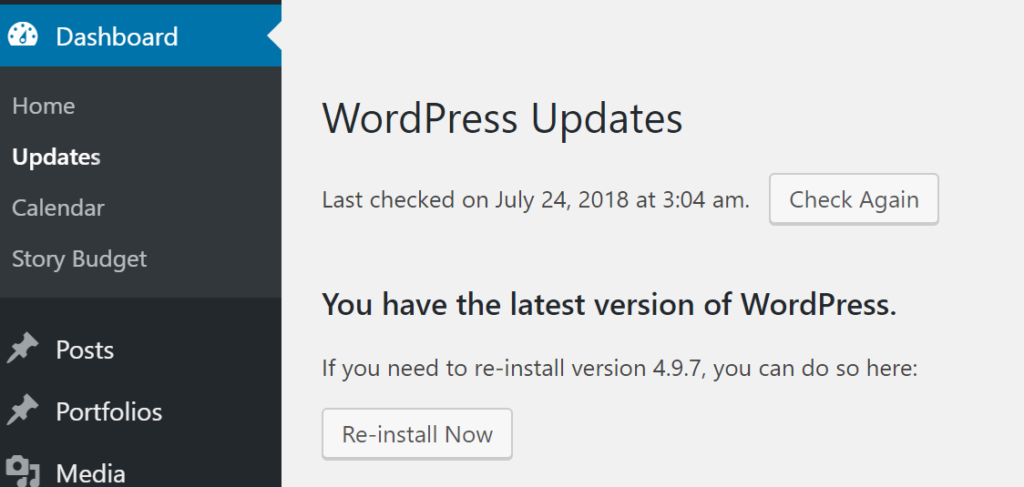In this era, WordPress is trending for CMS(Content Management System) and powers more than 30% of websites. Hackers may have taken and are beginning to specially target WordPress websites.if you don’t acquire certain protection of your WordPress website you could get hacked. you need to check your website security.
In this tutorial, we will share our 10 Best Tips to keep your WordPress website secure.
- Choose a Good Hosting Company
- . Don’t Use Nulled Themes
- Install a WordPress Security Plugin
- Use a Strong Password
- Disable File Editing
- Install SSL Certificate
- Change your WP-login URL
- Limit Login Attempts
- Hide wp-config.php and .htaccess files
- Update your WordPress version
To keep your website secure firstly you go with hosting provider company that provides multiple layers of security.
It might appear appealing to go with a cheap hosting provider, after all, saving funds on your website hosting means you can use up it somewhere else surrounded by your organization. on the other hand, don’t be tempted in this way. It can, and frequently does reason nightmares down the way. Your data could be totally erased and your URL might begin redirecting somewhere else.
Paying a little bit more for a value hosting company means further layers of security are automatically recognized to your website. A further advantage, by using a good quality WordPress hosting, you can speed up your WordPress site.
Many hosting that recommends you like WPEngine.They provide a lot of security features, together with everyday malware scans and access to support 24/7, 365 days and also the pricing is also reasonable.

Wordpress free themes seem not professional and not customizable as compared to premium themes. Premium themes are coded by highly skilled developed and tested to many phases.if some something goes wrong on your website you will get full support also provides you regular theme updates.
But there are some websites make available nulled or cracked themes. These are hacked versions of the premium theme, accessible via illegal purpose, they are also very unsafe for your site contains hidden malicious codes that destroy your website, database and log your admin credentials.
It’s a time-consuming work to regularly check your website security for malware. Installing a WordPress security plugin check your website security also taking care of your site security scans malware and monitor your site 24/7 to regularly check what is happening on your website.
Sucuri.net is the best WordPress security plugin that provides you file integrity monitoring, auditing, remote malware scanning, blacklist monitoring, effective security hardening, post-hack security actions, security notifications, and even website firewall (for a premium).
Passwords are a very main part of website security and unluckily often ignored. If you are using a simple password i.e. ‘123456, abc123, password’, you require to right away change your password. at the same time as this password may be easy to remember it is also really easy to guess. An advanced user can easily break your secret code and get in without much hassle.
It’s important you make use of a complex password or improved yet, single that is auto-generated with a selection of facts, irrational letter combinations and special characters like % or ^.
WordPress allows you to set up your website. There is a code editor function in your dashboard which allows you to edit your theme and plugin. It can be accessed by going option to Appearance>Editor, Another method going under Plugin>Editor.
Once your site is live we recommend that you disable this feature. If any hackers gain access to your WordPress admin panel, they can inject subtle, malicious code to your theme and plugin. Often times the code will be so subtle you may not notice anything is amiss until it is too late.
To disable the ability to edit plugins and the theme file, simply paste the following code in your wp-config.php file.
define(‘DISALLOW_FILE_EDIT’, true);

These days Single Sockets Layer, SSL, is helpful for everyone kinds of websites. at first, SSL was required in organize to build a site protected for definite transactions, similar to process payments. Today, however, Google has recognized it’s significance and provides sites with an SSL certificate an additional weighted place within its search results.
SSL is compulsory for any sites that procedure responsive in sequence, i.e. passwords, or credit card details. with no SSL certificate, all of the data between the user’s web browser and your web server are delivered in plain text. This can be understandable by hackers. By using an SSL, the sensitive information is encrypted before it is transferred stuck between their browser and your server, making it more difficult to read and making your site more secure.
For websites that recognize sensitive information, a standard SSL price is around $70-$199 per year. If you don’t understand any sensitive information you don’t need to pay for SSL certificate. Almost every hosting company offers a without charge Let’s Encrypt SSL certificate which you can install on your site.
By default, to login to WordPress, the speak to is “yoursite.com/wp-admin”. By leaving it as default you may be targeted for a brute force attack to crack your username/password combination. If you accept users to register for subscription accounts you may also get a lot of spam registrations. To prevent this, you can change the admin login URL or add a security question to the registration and login page.
Pro Tip: You can further protect your login page by adding a 2-factor authentication plugin to your WordPress. When you try to log in, you will need to provide additional authentication in order to gain access your site — for example, it can be your password and an email (or text). This is an enhanced security feature to prevent hackers from accessing your site.
Pro Tip 2: You can also check which IPs have the most failed login attempts, then you can block those IP addresses.
By default, WordPress allows users to try to login as many times as they would like. While this may assist if you often forget what letters are capital, it also opens you to brute force attacks.
By warning the number of login attempts, users can attempt an incomplete number of times until they are temporarily blocked. This limits your chance of a brute force effort as the hacker gets locked out earlier than they can finish their attack.
You can allow this without difficulty with a WordPress login maximum attempts plugin. After you’ve installed the plugin you can change the number of login attempts via Settings> Login Limit Attempts. If you wish to allow login attempts without a plugin you can also do so. The full tutorial is here.

While this is a complex procedure for improving your site’s security, if you’re serious about your security it’s a good quality practice to hide your site’s .htaccess and wp-config.php files to prevent hackers from accessing them.
We powerfully recommend this selection to be implemented by qualified developers, as it’s very important to first take a backup of your site and then carry on with caution. Any error might make your site out-of-the-way.
To hide the files, after your backup, there are two things you need to do:
First, go to your wp-config.php file and add the following code,
order allow, deny
deny from all
In a similar method, you will add the following code to your .htaccess file,
order allow, deny
deny from all
Although the process itself is very easy it’s important to ensure you have the backup before beginning in case anything goes wrong in the process.
Keeping your WordPress up to date is a good practice for keeping your website secure. With every update, developers make not many changes, frequently times together with updates to security features. By staying updated with the updated version you are helping save from harm yourself against being a target for pre-identified loopholes and exploits hackers can use to put on access to your site.
It is also important to update your plugins and themes for the same reasons.
By default, WordPress automatically downloads minor updates. For major updates, however, you will need to update it directly from your WordPress admin dashboard.

Conclusion
WordPress security is one of the critical parts of a website. If you don’t preserve your WordPress security, hackers can easily attack your site. Maintaining your website security isn’t hard and can be done without spending a penny. Some of these solutions are for advanced users but if you have any questions AmDee is right around the digital corner.